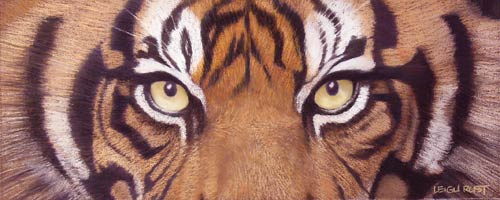
I started with the lightest sections of his brow, paying close attention to the textures and highlighting the wrinkles around his closed eyes. at the same time I began the job of modelling Tombo's rear leg.
For Tonji's jaw and snout I used my white substitutes; pale violets, ultramarine blue, australian grey and warm white. The darkest tones were a combination of flinders blue and red violets along with pilbara red for zing. The subtle highlight on his lip was done using a mid blue grey lightly applied to blend with the base tone.
The modelling on tombo's leg was started using my light sienna and umber tones, both raw and burnt. I applied the pastel using the broad side of the stick very lightliy to allow the paper to play its part in achieving the look I wanted. Many more layers would follow on from this but i gave me a solid base to build on.
For Tonji's jaw and snout I used my white substitutes; pale violets, ultramarine blue, australian grey and warm white. The darkest tones were a combination of flinders blue and red violets along with pilbara red for zing. The subtle highlight on his lip was done using a mid blue grey lightly applied to blend with the base tone.
The modelling on tombo's leg was started using my light sienna and umber tones, both raw and burnt. I applied the pastel using the broad side of the stick very lightliy to allow the paper to play its part in achieving the look I wanted. Many more layers would follow on from this but i gave me a solid base to build on.

With the first layer of Tombo's leg completed I used the same collection of tones to build his body, working loosely at this stage to lay in the wrinkles.










